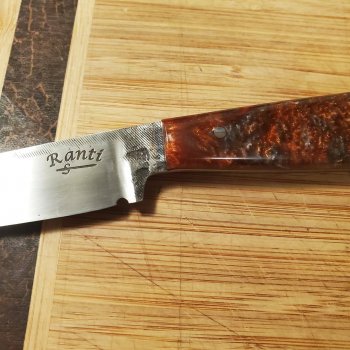I’ve been through as many old threads as I can but I’m still a little confused on suitability of a power source for etching a makers mark. I have been entertains the idea of making my own but locally (Australia) I can buy a lab power supply with the following specs:
Outputs
I'm looking to set up for etching my mark on folder blades as stamping is causing me issues in getting and keeping everything flat and straight!
Thanks
Ian
Outputs
- AC output: Switch selected 2, 4, 6, 8, 10, 12V.AC (nominal) at 6 Amp continuous.
- DC output: Switch selected 2, 4, 6, 8, 10, 12V.DC (nominal) full wave rectified andunfiltered 5 Amps continuous.
I'm looking to set up for etching my mark on folder blades as stamping is causing me issues in getting and keeping everything flat and straight!
Thanks
Ian



